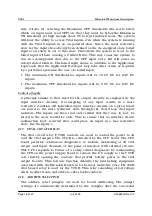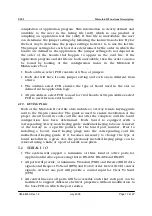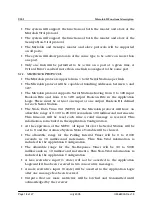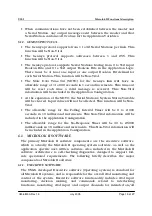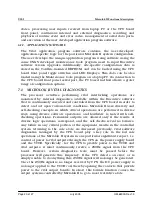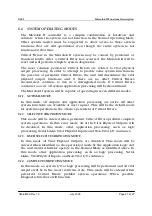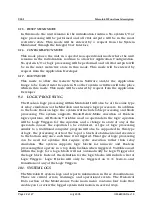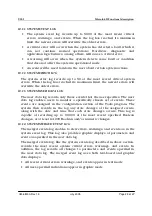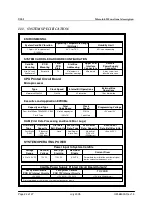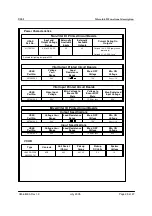
USSI Microlok II Functional description
Page 18 of 27 July 2005 UM-6800A Rev1.3
•
The system will support the functions of both the master and slave of the
Microlok Vital protocol.
•
The system will support the functions of both the master and slave of the
Genisys Non-Vital protocol.
•
The Microlok and Genisys, master and slave protocols will be supported
on all ports.
•
The system will allow protocols of the same type to be active on more than
one port.
•
Only one link will be permitted to be active on a port at a given time. A
Critical Error results if more than one link is assigned to the same port.
5.1.1. MICROLOK PROTOCOL
•
The Microlok protocol supports from 1 to 32 Serial Stations per link.
•
The Microlok protocol will be capable of handling addresses between 1 and
127.
•
The Microlok protocol supports Serial Stations having from 0 to 128 input
Boolean Bits and from 0 to 128 output Boolean Bits in the Application
Logic. There must be at least one input or one output Boolean Bit defined
for each Serial Station.
•
The Stale Data Time-Out (SDTO) for the Microlok protocol will have an
allowable range of 0.100 to 25.000 seconds in 100 millisecond increments.
This time-out will be reset each time a valid message is received. This
information is included in the Application Configuration.
•
At the expiration of the SDTO, all input bits for the Serial Station will be
set to 0 and the station’s System Status Variable will be cleared.
•
The allowable range for the Polling Interval Timer will be 0 to 2.000
seconds in 10 millisecond increments. This Non-Vital information is
included in the Application Configuration.
•
The allowable range for the No-Response Timer will be 30 to 5000
milliseconds in 10 millisecond increments. This Non-Vital information is
included in the Application Configuration.
•
A less restrictive input (1 state) will not be asserted to the Application
Logic until it has been received in two consecutive messages.
•
A more restrictive input (0 state) will be asserted to the Application Logic
after one message has been received.
•
Outputs that are more restrictive will be latched and transmitted until
acknowledged by the receiver.













